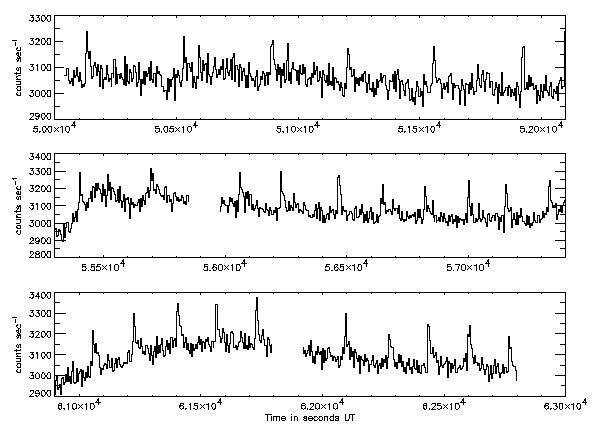
| We have only touched on a
few of the scientific investigations Compton continues to perform. A large
number of exciting and important investigations remain to be done during
the coming years of the Compton mission. As with many good experiments,
the Compton instruments have revealed new questions for every old question
they have answered. Only by exploring the universe, can we truly find how
much we have to learn.
|
As an example of a totally unexpected, but profound, discovery, on December 2, 1995, BATSE began to detect bursts of low-energy gamma rays from a direction within a few degrees of the center of our galaxy. These bright flashes of radiation repeat every few minutes. This train of bursts continued to be detected, although at a slower rate of about one per hour for the next two months. This was a new type of bursting galactic source, named GRO J1744-28, which would turn out to be even more remarkable than first thought. While some accreting galactic sources have shown bursting behavior, particularly at x-ray energies, and other accreting galactic sources are x-ray pulsars - emitting x- rays at the rotational period of the neutron star, it was soon discovered | that this source was not only bursting, but it was emitting regular pulses as well! About twice per second. This "Bursting Pulsar" is unlike any other known astrophysical object. Is this a completely unique object or simply the first of a new class? Maybe it is an example of a source in a brief stage of evolution which will not be seen for a very long time. |

Early time history of the "Bursting Pulsar" showing some of the
thousands of bursts seen from this unique source.